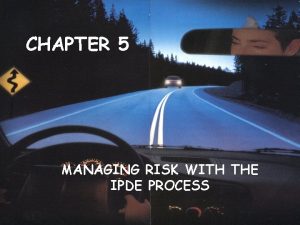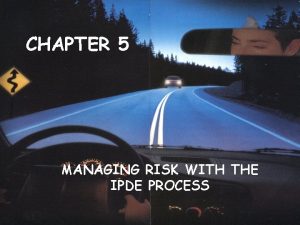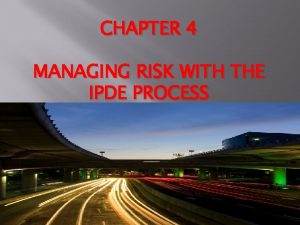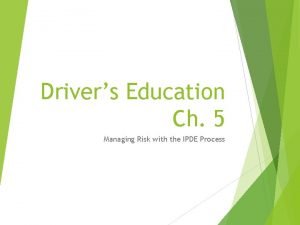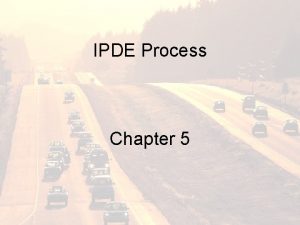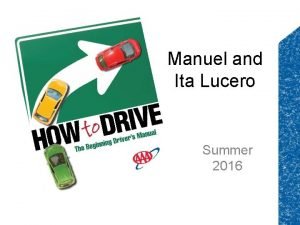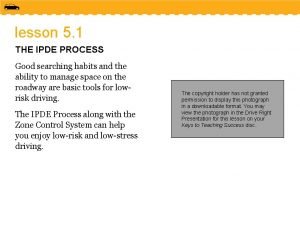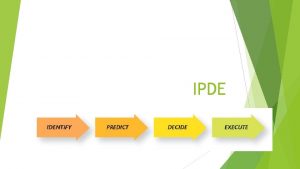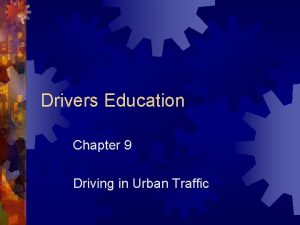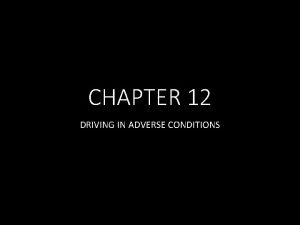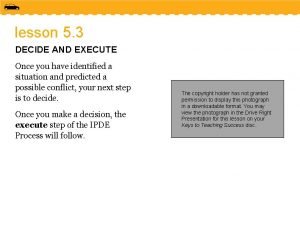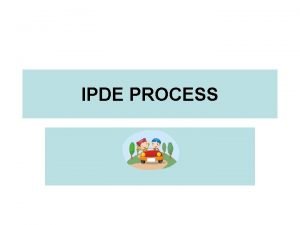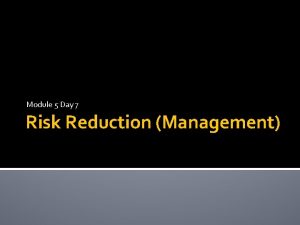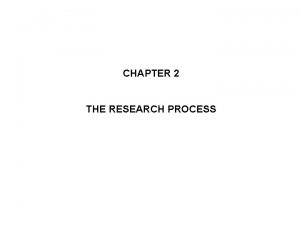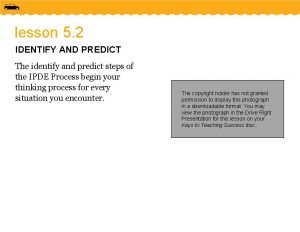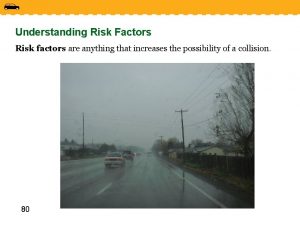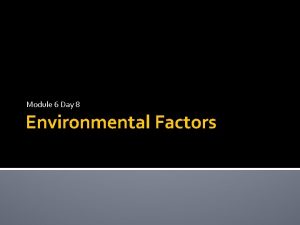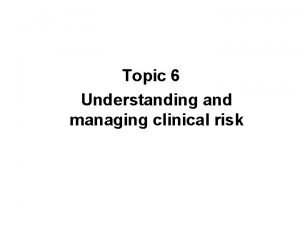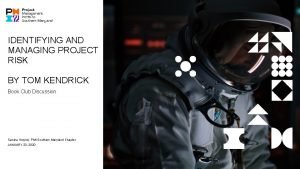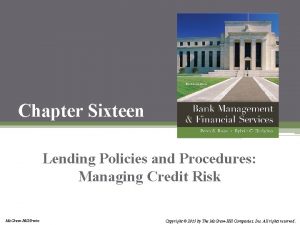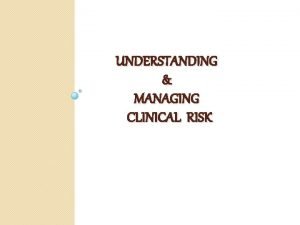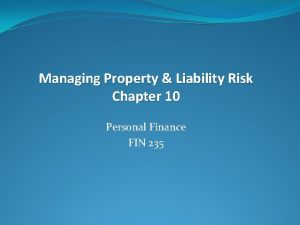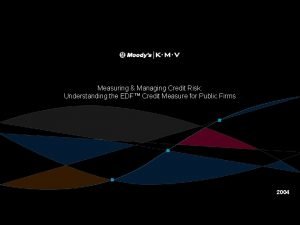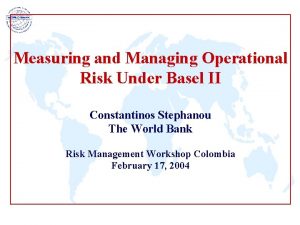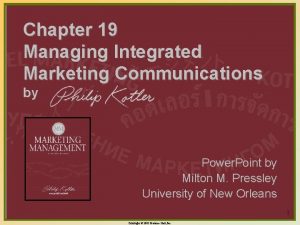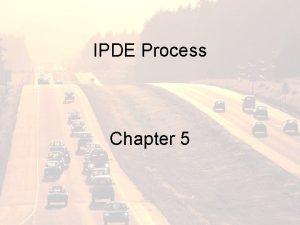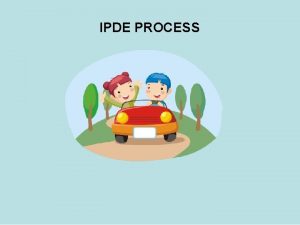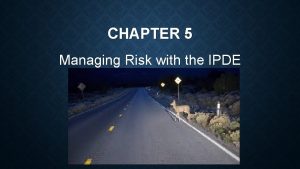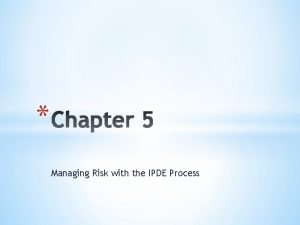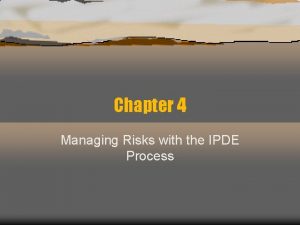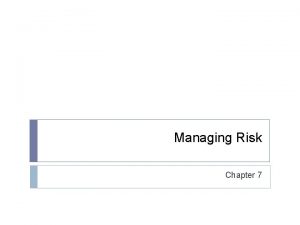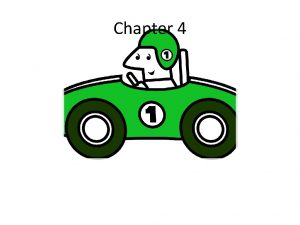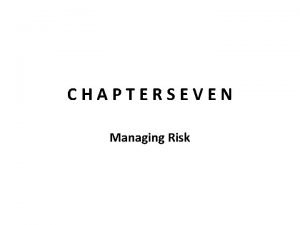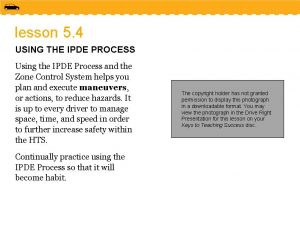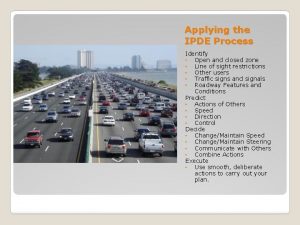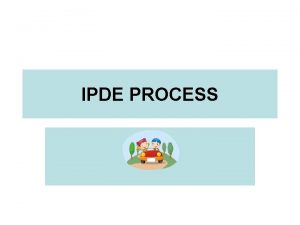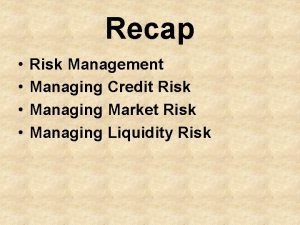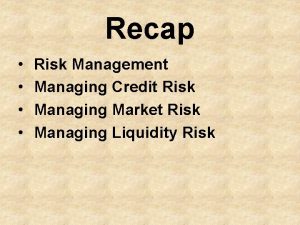CHAPTER 5 MANAGING RISK WITH THE IPDE PROCESS








































- Slides: 40

CHAPTER 5 MANAGING RISK WITH THE IPDE PROCESS

CHAPTER 5 MANAGING RISK WITH THE IPDE PROCESS 5. 1 THE IPDE PROCESS 5. 2 IDENTIFY AND PREDICT 5. 3 DECIDE AND EXECUTE 5. 4 USING THE IPDE PROCESS

CHAPTER 5 RISK Factors anything that can increase the possibility of a collision, involved in driving. WHO/WHAT? • Driver • Vehicle • Roadway

FACTORS THAT CONTRIBUTE TO DRIVING RISK DRIVER CONTRIBUTED RISKS: ADJUSTING RADIO BEING ANGRY HAVING BLURRED VISION COMBING HAIR DRINKING WHILE DRIVING USING A CELL PHONE

FACTORS THAT CONTRIBUTE TO DRIVING RISK Vehicle contributed risks: Bald Tires Bad brakes Dirty windshield Broken headlights Worn wipers

FACTORS THAT CONTRIBUTE TO DRIVING RISK Roadway/Environment contributed risks: Bright sun Construction Dark shadows Snow and ice Sharp curve

The S…IPDE PROCESS Organized system of: • Seeing • Thinking • Responding Primarily a thinking task.

THE IPDE PROCESS IDENTIFY: Open and closed zones Clues Other users Roadway features and conditions Traffic controls

THE IPDE PROCESS PREDICT aka INTERPRET: Actions of others Speed Direction Control

THE IPDE PROCESS DECIDE: Change or maintain speed Change direction Communicate

THE IPDE PROCESS EXECUTE: Control your speed Steer Communicate Combine actions (ie. Multi-tasking)

Identify WHEN to look, WHERE to look, HOW to look, and WHAT to look for. • Identify zones: 6 areas of space around your vehicle that the driver can see. • Search target-area range: space from your vehicle to the target area

ZONE CONTROL SYSTEM 1. See a zone change 2. Check other zones 3. Create time and space by getting the best speed control

ZONES AND SEARCHING OPEN ZONE: Any zone where you can drive without a restriction.

ZONES AND SEARCHING LINE OF SIGHT: The distance you can see ahead in the direction you are looking.

ZONES AND SEARCHING PATH OF TRAVEL: The place where you intend to go

ZONES AND SEARCHING TARGET AREA: the section of roadway where the target is located in the center of your intended path

Closed Zones: A space not open to you because of a restriction in your line of sight or intended path of travel.

ZONES AND SEARCHING Target Area Range: The space from your vehicle to the target area.

ORDERLY VISUAL SEARCH PATTERN A process of searching critical areas in a regular sequence.

Field of Vision Central Vision: Narrow area you can see very clearly directly in front of you. Peripheral Vision: The area you can see to the left and right outside your central vision.

LOOK FOR OPEN ZONES Look for clues that might lead to an open or closed zone.

LOOK FOR OTHER USERS Anyone who might effect your intended path of travel.

GROUND VIEWING Glancing at the front tires of approaching vehicles to help predict where they are headed.

LOOK FOR ROADWAY FEATURES Hills, Intersections, Curves, etc.

CHANGE FROM MULTILANE TO SINGLE LANE • Be prepared to change lanes. • Watch for others changing lanes

LOOK FOR TRAFFIC CONTROLS Be prepared to react to them in time.

HOW TO PREDICT Requires: • Knowledge • Judgment • Experience

WHAT TO PREDICT? Actions of others Your control of your vehicle and the consequences of your actions

DECIDE 2 Decisions 1. Decide to change speeds 2. Decide to change direction

SPACE CUSHION The area of space all around your vehicle.

• Lane position 1 • Lane position 2 • Lane position 3

DECIDE TO COMMUNICATE • Headlights, taillights, brake lights • Turn signals • Parking lights or hazards • Back-up lights • Horn • Car position • Eye contact

MINIMIZE THE HAZARD Reduce the possibility of conflict by deciding to put more distance between yourself and the hazard

SEPARATE THE HAZARDS Adjusting your speed in order to deal with one hazard at a time. Therefore, minimize speed

COMPROMISE SPACE Giving as much space as possible to the greater hazard

PRACTICE IPDE COMMENTARY DRIVING: Thinking out loud while you drive.

IPDE TAKES TIME • The most important thing to remember is that you must have time to see clues, predict actions, decide what to do, and perform the safest maneuver. • Practice in low risk environments first, before moving into busier traffic.

Harold Smith In 1952, Harold Smith established the Smith System Driver Improvement Institute, the nation's first professional driver training company. He understood that most collisions are preventable if the right driving habits are learned, practiced and applied consistently. Since then, millions of drivers throughout the world have benefited from the system Harold developed.

THE SMITH SYSTEM 1. 2. 3. 4. 5. Aim high in steering Keep your eyes moving Get the big picture Make sure others see you Leave yourself an out
 When you apply the ipde process
When you apply the ipde process Chapter 5 managing risk with the ipde process answer key
Chapter 5 managing risk with the ipde process answer key Explain what is meant by selective use of the ipde process
Explain what is meant by selective use of the ipde process Orderly visual search pattern definition
Orderly visual search pattern definition Chapter 4 managing risk with the ipde process
Chapter 4 managing risk with the ipde process What does ipde stand for
What does ipde stand for Liquidity measures
Liquidity measures Chapter 1 managing risk when driving
Chapter 1 managing risk when driving Horizontal e vertical
Horizontal e vertical The four step in the ipde process are
The four step in the ipde process are Orderly visual search pattern
Orderly visual search pattern Use the driving in city traffic terms
Use the driving in city traffic terms To give yourself more time for the ipde process at night
To give yourself more time for the ipde process at night Identify predict decide execute
Identify predict decide execute Ipde process survey answers
Ipde process survey answers Write the terms associated with ipde process
Write the terms associated with ipde process How can you best use the ipde process in city driving
How can you best use the ipde process in city driving What processes are crucial to the ipde process
What processes are crucial to the ipde process Orderly visual search pattern
Orderly visual search pattern To compromise space means to
To compromise space means to How can you best use the ipde process in city driving
How can you best use the ipde process in city driving Understanding and managing clinical risk
Understanding and managing clinical risk Many new drivers first fender bender is a backing collision
Many new drivers first fender bender is a backing collision Module 4 topic 1 assessing and managing risk
Module 4 topic 1 assessing and managing risk Module 7 managing risk answer key
Module 7 managing risk answer key Identifying and managing project risk tom kendrick
Identifying and managing project risk tom kendrick Lending policies and procedures managing credit risk
Lending policies and procedures managing credit risk Managing clinical risk
Managing clinical risk Managing property and liability risk
Managing property and liability risk Measuring and managing credit risk
Measuring and managing credit risk Measuring and managing operational risk
Measuring and managing operational risk Managing integrated marketing communication process
Managing integrated marketing communication process Risk projection attempts to rate each risk in two ways
Risk projection attempts to rate each risk in two ways Risk reduction vs risk avoidance
Risk reduction vs risk avoidance Relative risk calculation
Relative risk calculation Residual risk and secondary risk pmp
Residual risk and secondary risk pmp Tracing vs vouching
Tracing vs vouching Absolute risk vs relative risk
Absolute risk vs relative risk Activity sheet 1: conservative, moderate or speculative?
Activity sheet 1: conservative, moderate or speculative? Firm risk scorecard examples
Firm risk scorecard examples Risk financing transfer adalah
Risk financing transfer adalah
